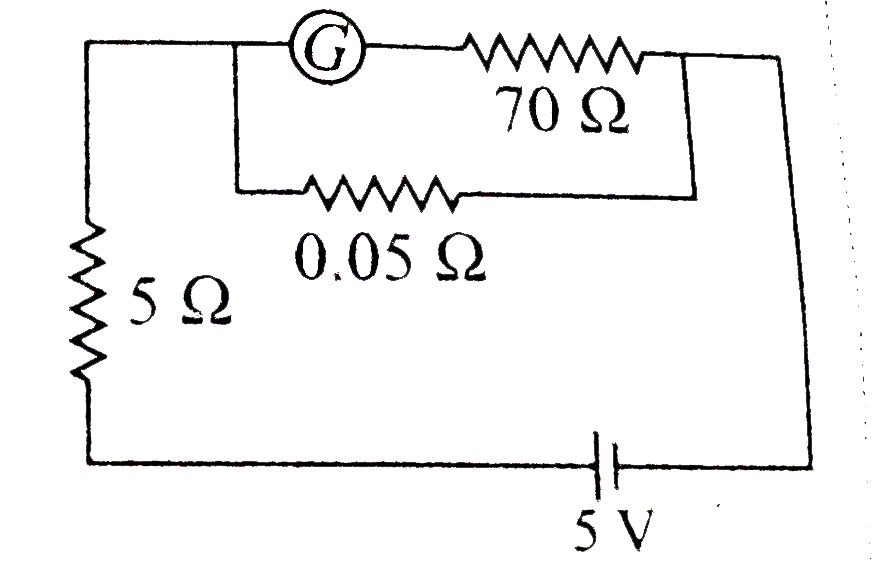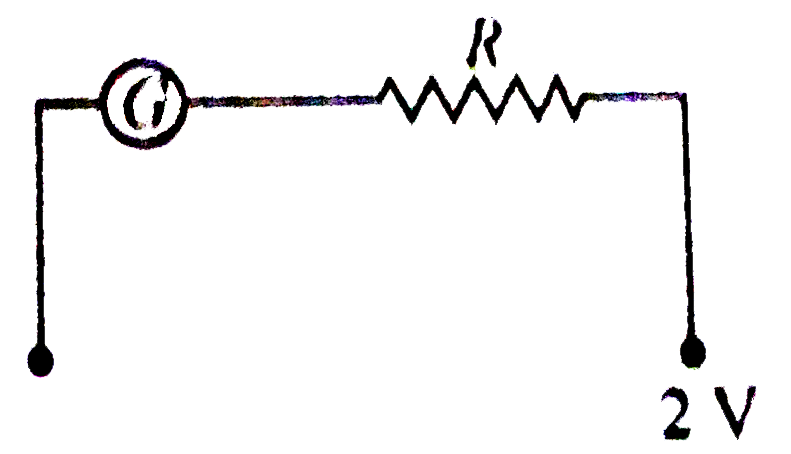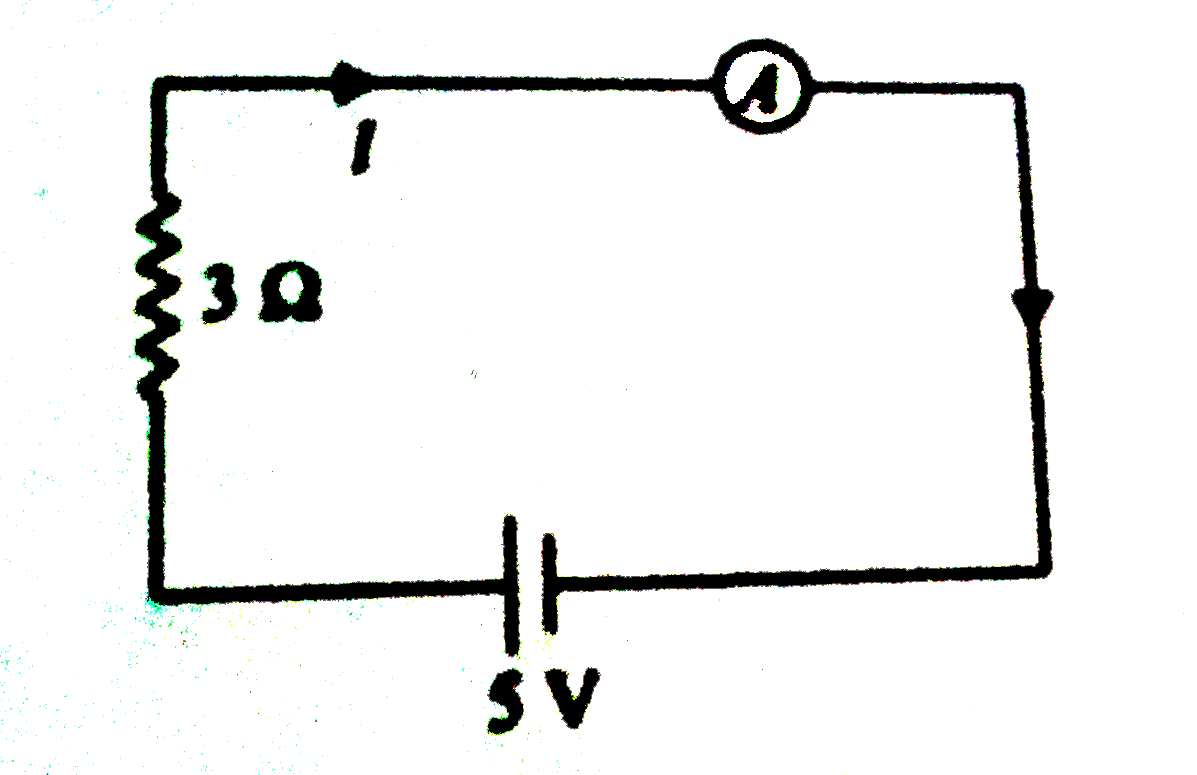Complete Solutions to The Moving Coil Galvanometer of chapter MOVING CHARGES AND MAGNETISM of Class 12 book with complete answers and questions
| Class 12 | PHYSICS |
| Chapter | MOVING CHARGES AND MAGNETISM |
| NCERT FINGERTIPS | The Moving Coil Galvanometer |
| Number Of Questions | 16 |
| Academic Year | 2023-24 |
In a moving coil galvanometer the deflection `(phi)` on the scale by a pointer attached to the spring is
View SolutionTwo moving coil metres `M_(1) and M_(2)` have the following particular `R_(1) =10Omega, N_(1) =30, A_(1) = 3.6 xx 10^(-3) m^(2), B_(1) =0.25 T,`
`R_(2) = 14Omega , N_(2) =42, A_(2) = 1.8 xx 10^(-3) m^(2), B_(2) =0.50 T`
The spring constants are identical for the two metres. What is the ratio of current sensitivity and voltage sensitivity of `M_(2)" to" M_(1)?`
View SolutionIf the current sensitivity of a galvanometer is doubled, then its voltage sensitivity will be
View SolutionA galvanometer can be converted into an ammeter by connecting
View SolutionA galvanometer of resistance `70 Omega`, is converted to an ammeter by a shunt resistance `r_(3) = 0.03 Omega`. The value of its resistance will become
View SolutionIf the galvanometer current is 10 mA, resistance of the galvanometer is `40 Omega` and shunt of `2 Omega` is connected to the galvanometer, the maximum current which can be measured by this ammeter is
View SolutionA galvanometer of resistance `40 Omega` gives a deflection of 5 divisions per mA. There are 50 divisions on the scale. The maximum current that can pass through it when a shunt resistance of `2Omega` is connected is
View SolutionIn the given circuit, a galvanometer with a resistance of `70 Omega` is converted to an ammeter `0.05 Omega` by a shunt resistance of 0.05 2, total current measured by this device

View SolutionA galvanometer having a resistance of `50 Omega`, gives a full scale deflection for a current of 0.05 A. The length (in metres) of a resistance wire of area of cross section `3 xx 10^(-2) cm` that can be used to convert the galvanometer into an ammeter which can read a maximum of 5 A current is `("Specific resistance of the wire "= 5 xx 10^(-7)Omega m) `
View SolutionThe conversion of a moving coil galvanometer into a voltmeter is done by
View SolutionThe resistance of a galvanometer is `10 Omega`. It gives full-scale deflections when `1 mA` current is passed. The resistance connected in series for converting it into a voltmeter of `2.5 V` will be
View SolutionA voltmeter which can measure 2 V isconstructed by using a galvanometer of resistance `12 Omega` and that produces maximum deflection for the current of 2mA. Then the resistance R is

View SolutionThe value of current in the given circuit if the ammeter is a galvanometer with a resistance `R_(G)=50Omega` is

View SolutionA galvanometer coil has a resistance of `15 Omega` and the metre shows full scale deflection for a current of 4 mA. To convert the meter into a voltmeter of range 0 to 18 V, the required resistance is
View SolutionA galvanometer of resistance `50 Omega ` is connected to a battery of `3 V` along with resistance of `2950 Omega` in series. A full scale deflection of 30 divisions is obtained in the galvanometer. In order to reduce this deflection to 20 division the above series resistance should be
View SolutionThe range of voltmeter of resistance `300 Omega` is 5 V. The resistance to be connected to convert it into an ammeter of range 5 A is
View Solution
The Moving Coil Galvanometer questions and complete solutions for chapter MOVING CHARGES AND MAGNETISM of NCERT FINGERTIPS PHYSICS (HINGLISH) of Class 12
All Exercises from NCERT FINGERTIPS Class 12 PHYSICS MOVING CHARGES AND MAGNETISM
- Ampere'S Circuit Law
- Assertion And Reason
- Force Between The Parallel Currents, The Ampere
- Higher Order Thinking Skills
- Magnetic Field Due To A Current Element, Biot-Savart Law
- Magnetic Field On The Axis Of A Circular Current Loop
- Magnetic Force
- Motion In Combined Electric And Magnetic Fields
- Motion In Magnetic Field
- NCERT Exemplar
- The Moving Coil Galvanometer
- The Solenoid And The Toroid
- Torque On Current Loop, Magnetic Dipole